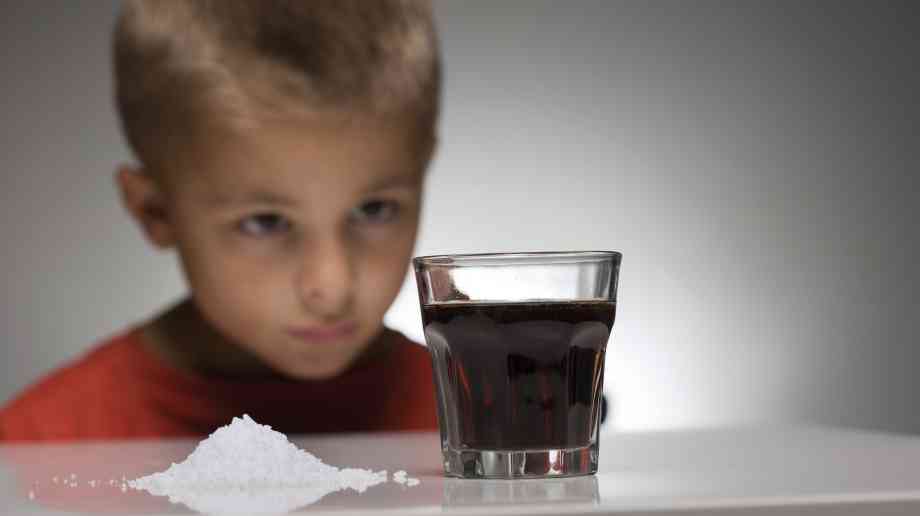
Healthy hydration necessary for pupils
Following the announcement by the government of an impending Sugar Tax and a renewed focus on the dangers of sugary drinks, Education Business evaluates the importance of nutritional value in children’s diets and the importance of hydration for students.
As part of his March Budget, perhaps Chancellor George Osborne’s biggest announcement was his plan to introduce a sugar tax on the soft drinks industry, due to come into effect in two year’s time. A large proportion of the health sector have been calling for such a levy for a number of years, with TV chef Jamie Oliver, who set up a similar levy in his restaurants, gaining over 150,000 signatures in an e-petition campaigning for action on sugary drinks.
The tax will be imposed in line with the volume of the sugar-sweetened drinks a company produces or imports. Pure fruit juices and milk-based drinks are excluded, while the smallest producers also have exemption from the scheme. Those that will face more taxation will be categorised in one of two groups – one for total sugar content above 5g per 100 millilitres and a second for more than 8g per 100 millilitres.
The predicted levy stands at 18p and 24p per litre for the two groups.
How to limit popular drinks
Currently, drinks such as Coca-Cola, Pepsi, Lucozade Energy and Irn-Bru would fall into the higher rate category, while Sprite, Fanta and Dr Pepper would fall into the lower. The concern for schools is that these are the drinks proving popular with students – particularly at secondary school age. Therefore, Osborne announced that the money raised from the tax, believed to be nearly £520 million a year, will be spent on increasing the funding for sport in primary schools. The hope is that primary school PE will be improved, with facilities, resources, equipment and skilled teachers all more possible with the extra funding than it was without, with a knock-on effect to gradually be in place for future generations.
Figures released this year detail how one in every ten children in England are obese at the start of primary school. By age 11, when children leave primary school, that figure deflates to one in every five. The sugar tax news from March has once again raised the question of how schools can best implement nutritious foods into pupil’s diets and play their part in fighting the obesity problem?
Outside of the school gates, a number of associations and organisations are trying to play their part. On 13-17 June, the British Nutrition Foundation held it’s annual Healthy Eating Week, aiming to promote healthy eating and drinking, being active, food provenance and cooking in school.
With free resources, programmes and activities for five different age ranges, the week was a success. The lower age ranges, for children aged five – eight, focused on four areas – healthy eating, cooking, food and farming and learning with stories. The range dedicated for 11-16 year-olds explored the areas in more depth, examining dietary needs and health, energy and nutrients, ingredients and food science, and food processing, as well as being introduced to ‘mywellbeing’ – an online diet and physical activity tool.
High priority for hydration
Young children have a higher proportion of body water than adults, and are therefore less heat tolerant and more susceptible to dehydration. Dehydration is defined as ‘a lack of water in the body resulting from inadequate intake of fluids or excessive loss through sweating, vomiting, or diarrhoea’. Hence, encouraging children to drink fluids regularly is particularly important to stay properly hydrated.
Part of the problem with young children is that habits are very easy to form but not as easy to break. Encouraging children to stay properly hydrated early on can be very beneficial, but a failure to do so can have major health and lifestyle dangers. That is why teachers, alongside parents or guardians, have an essential role to play. Drinking fluids is not necessarily prioritised in schools, with pupils often forgetting to drink appropriate quantities, especially at lunch times when they may be running about outside and in most need of hydration.
It is advised that children, primarily between the ages of four and 13, drink approximately six-eight glasses of fluid a day. These should be unsweetened and free from additives – such as water, milk, fruit juice or vegetable juice.
According to the Natural Hydration Council, ‘dehydration, even if only mild, can cause tiredness, headaches, lack of concentration, reduced mental performance and dry skin’. But is there an opposing positive correlation between hydration and cognition? C.J. Edmonds’ investigation, ‘Should children drink more water? The effects of drinking water on cognition in children’, examined such a question and concluded that consuming water benefits cognitive performance in children, much in the same manner as with adults. As part of their investigation, Edmonds found that those who consumed additional water performed significantly better than the comparison group involved.
Sports drinks
While encouraging children to take on board more water, as the sugar taxed drinks show, it is equally necessary to provide, promote or encourage the correct drinks. A recent research paper by Cardiff University discovered that 89 per cent of Welsh 12 to 14-year-olds questioned used high-sugar sport drinks, with 68 per cent of those using them at least once a week. While the drinks are designed for consumption after vigorous physical activity, the research found that many teenagers were attracted to the sweet taste, low price and mass availability.
The Faculty of Sport and Exercise Medicine (FSEM) is calling for tighter regulation around the promotion of sports drinks to children, after highlighting their link to tooth decay. Paul Jackson, FSEM president, warned that ‘water and milk are sufficient enough to hydrate active children’, saying, in the majority of situations, high‑sugar sports drinks are unnecessary.
Maria Morgan, senior lecturer in dental public health, said: “The purpose of sports drinks are being misunderstood and this study clearly shows evidence of high school age children being attracted to these high sugar and low pH level drinks, leading to an increased risk of dental cavities, enamel erosion and obesity.”
The milk is on me
When discussing the hydration and healthy drinking habits among children it is all too easy to think only of water (more of...) and fizzy drinks (less of...). Many overlook the nutritious value of milk in their diet, despite a large number of people consuming it on a daily basis. Milk contains lots of essential nutrients such as protein, B vitamins and calcium, and is also a source of water.
A study from McMaster University, in Ontario, Canada, found that milk is better than either a sports drink or water because it is a source of high quality protein, carbohydrates, calcium and electrolytes. It also replaces sodium lost in sweat and helps the body retain fluid better. The fat in certain milks can slow and delay fluid replacement, so it is imperative to offer pupils slimmed down cartons.
Essentially, teachers and school authorities have a responsibility to play their part in improving child well-being and health, and in doing so, witness a revival for the ‘unhealthy’ and ‘obese’ younger generation.
Much of this revival is dependent upon installing healthy habits rather than radical lifestyle changes, and much more can be achieved before the problem is unmanageable – and this is why schools are responsible.
Ensuring pupils are well hydrated can do a lot more than scare away thirst. Healthy hydration at a young age can lead to healthy lifestyles later in life.
Further Information
www.naturalhydrationcouncil.org.uk
Latest News
21/11/2025 - 09:37
The framework provides a practical guide to integrating education and health for better outcomes for children and young people.
20/11/2025 - 10:42
Parents will be able to get Enhanced Disclosure and Barring Service (DBS) checks when hiring private tutors, carers and therapists, among others.
20/11/2025 - 10:37
The government is funding research into developing smarter data tools to help identify children with special educational needs sooner.
20/11/2025 - 09:48
The programme prioritises schools with the highest proportion of pupils on free school meals to ensure the benefits are felt where it is most needed.
19/11/2025 - 09:41
Skills England has announced that development of the second round of Local Skills Improvement Plans (LSIPs) is now underway and has published guidance to steer the process







